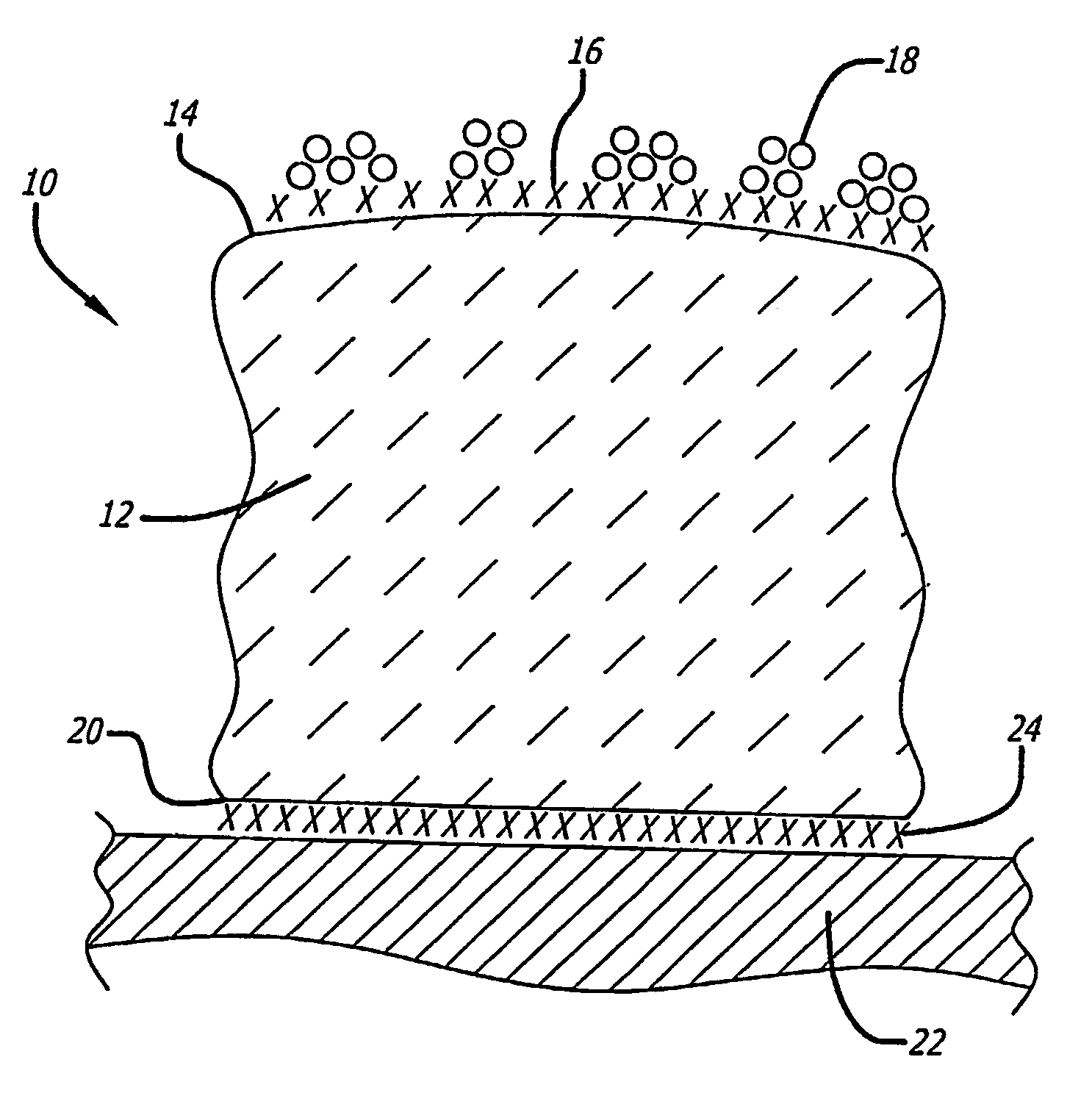Supported metal catalyst with improved thermal stability
a metal catalyst and thermal stability technology, applied in the field of catalytic systems, can solve the problems of prolonged useful catalyst lifetime, achieve the effects of prolonging the useful catalyst lifetime, suppressing particle sintering, and increasing the adhesion of metal catalyst particles to ceramic supports
- Summary
- Abstract
- Description
- Claims
- Application Information
AI Technical Summary
Benefits of technology
Problems solved by technology
Method used
Image
Examples
example 1
[0030]400 grams of pure (99.5 weight percent) gamma-alumina powder is provided that has a surface area of about 150 square meters per gram. A ½ monolayer of titanium is applied to the powder surface using atomic titanium vapor deposition to provide a modified alumina. If desired, the titanium dopant may be applied by adding an organometallic complex containing titanium (either in the vapor phase or in an organic solvent) followed by reduction with hydrogen. The organo metallic should be a low-valent metal complex that is easily reduced. For example, carbonyl and hydride complexes of the early transition metal are suitable.
[0031]Once the ½ monolayer of titanium metal has been applied to the surface of the alumina, the modified alumina is then mixed with 280 mls of an aqueous platinum amine hydroxide or platinum chloride solution that contains about 2.1 grams platinum. Then, about 30 mls of glacial acetic acid is added. Essentially all of the liquids are absorbed by the alumina with t...
example 2
[0032]One hundred grams of gamma alumina powder that has been stabilized with 0.8% barium oxide is doped with titanium and zirconium in the same manner as Example 1 to provide modified alumina particles that have a ¼ monolayer of titanium and ¼ monolayer of zirconium on the surface of the particles. The modified particles are then impregnated with an aqueous palladium chloride solution containing 0.5 grams of palladium. 3 mls of a dilute (10%) solution of N2H4 is added to the wet powder to reduce the palladium species to metal particles and fix them on the alumina particles. The palladium containing alumina is then formed into a slurry by combining it with water and acetic acid. The slurry is then applied to a monolithic support of cordierite by dipping the monolith in the slurry. After excess slurry has been removed, the monolith is dried and calcined at 500° C. Based on density functional theory calculations, the catalyst is expected to have a prolonged lifetime as opposed to the ...
example 3
[0033]One hundred grams of gamma alumina powder is doped with titanium, zirconium and yttrium in the same manner as Example 1 to provide modified alumina particles that have a ¼ monolayer of titanium, ¼ monolayer of zirconium and ¼ monolayer of yttrium on the surface of the particles. The modified particles are then impregnated with an aqueous nickel chloride solution containing 0.5 grams of nickel. 3 mls of a dilute (10%) solution of N2H4 is added to the wet powder to reduce the nickel species to metal particles and fix them on the alumina particles. The nickel containing alumina is then formed into a slurry by combining it with water and acetic acid. The slurry is then applied to a metallic mesh monolithic support by dipping the monolith in the slurry. After excess slurry has been removed, the monolith is dried and calcined at 500° C. Based on density functional theory calculations, the catalyst is expected to have a prolonged lifetime as opposed to the same catalyst that does not...
PUM
| Property | Measurement | Unit |
|---|---|---|
| size | aaaaa | aaaaa |
| size | aaaaa | aaaaa |
| BET surface area | aaaaa | aaaaa |
Abstract
Description
Claims
Application Information
 Login to View More
Login to View More - R&D
- Intellectual Property
- Life Sciences
- Materials
- Tech Scout
- Unparalleled Data Quality
- Higher Quality Content
- 60% Fewer Hallucinations
Browse by: Latest US Patents, China's latest patents, Technical Efficacy Thesaurus, Application Domain, Technology Topic, Popular Technical Reports.
© 2025 PatSnap. All rights reserved.Legal|Privacy policy|Modern Slavery Act Transparency Statement|Sitemap|About US| Contact US: help@patsnap.com


